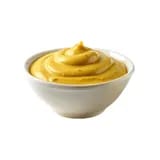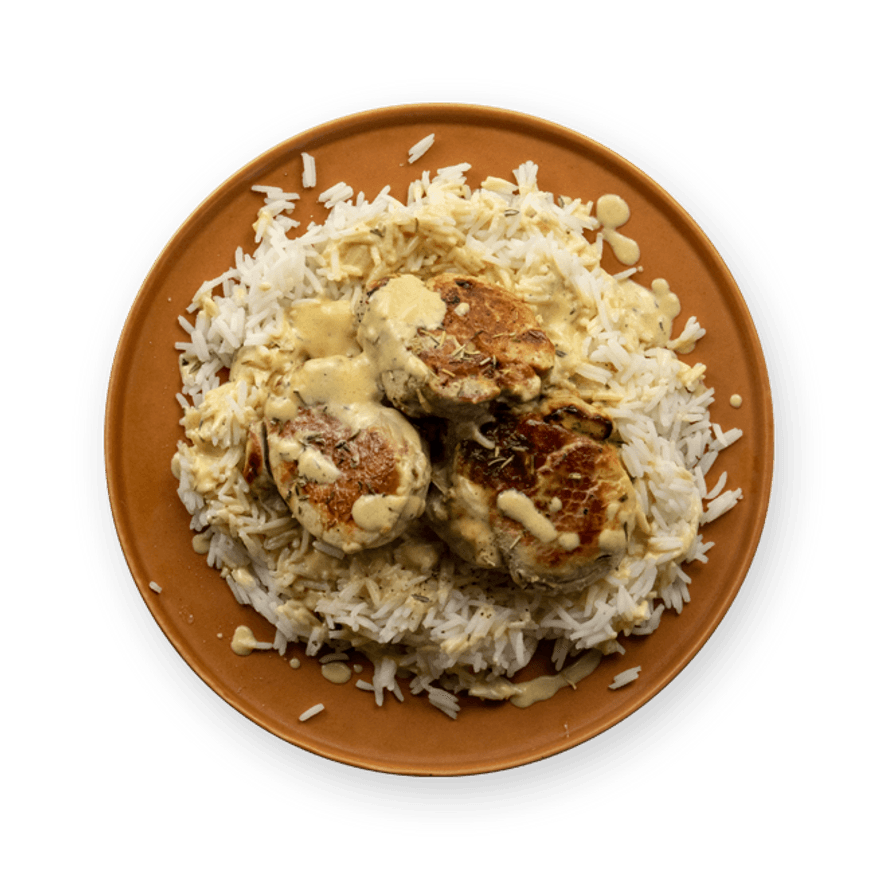Pork Tenderloin in Creamy Mustard Sauce
668 reviewsA refined dish, in a delicious sauce that you can mop up once you've finished eating!

Ingredients
Utensils
Stovetop, Pot (small), Colander, Frying pan
recipe

Step 1
Cook the rice according to the package instructions.

Step 2
Cut the pork tenderloin into medallions about 2-cm thick.


Step 3
Melt a dab of butter in a pan and fry the pork medallions for 5 minutes over high heat, turning them halfway through.



Step 4
Once the meat is nicely browned, add the crème fraîche, mustard, and thyme to the pan; season with salt and pepper.
Step 5
Sauté for 2 more minutes over medium heat.
Step 6
Serve the pork medallions with the rice and sauce*. Enjoy ! *Check out our tips for this step

For a truly flavoursome dish, we suggest adding grilled mushrooms, sautéed zucchini or confit tomatoes depending on the season !
- Domitille, Food Editor
Personal notes
Add your own flavor!
Nutrition facts
Average estimated amount for one serving
| Energy | 582 cal. |
| Fat | 24 g |
| Carbohydrates | 57 g |
| Protein | 33 g |
| Fiber | 2 g |
Values are based on an average estimate for one serving. All nutrition information presented on Jow is intended for informational purposes only. If you have any concerns or questions about your health, please consult with a health-care professional.
On average, one serving of the recipe "Pork Tenderloin in Creamy Mustard Sauce" contains 582 Energy, 24 g of Fat, 57 g of Carbohydrates, 33 g of Protein, 2 g of Fiber.
Price per portion
| € | Nos recettes à -2 € par portion |
| €€ | Nos recettes entre 2 € et 4 € par portion |
| €€€ | Nos recettes à +4 € par portion |
Please note, the price above is dependent on your grocer and the available products in the grocery store you chose.
Scores


C Nutri-score
The Nutri-score is an indicator intended for understanding nutritional information. Recipes or products are classified from A to E according to their food composition to promote (fiber, proteins, fruits, vegetables, legumes, etc.) and foods to limit (energy, saturated fatty acids, sugars, salt, etc.).
C Green-score
The Green-score is an indicator representing the environmental impact of food products. The recipes or products are classified from A+ to F. It takes into account several factors on the pollution of air, water, oceans, soil, as well as the impacts on the biosphere. These impacts are studied throughout the product life cycle.
Retrieving reviews...


